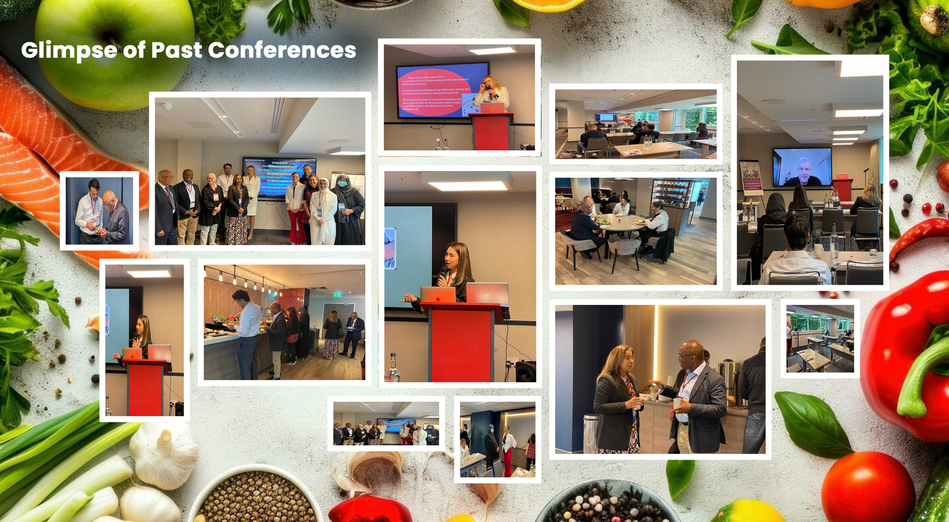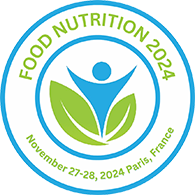About Conference
The 32nd International Conference on Food & Nutrition, scheduled for November 27-28, 2024, in Paris, France, promises to be a pivotal event under the theme "Nutrition for a Changing World: Innovation, Sustainability, and Health." This food and nutrition conference will gather leading experts, researchers, and practitioners from across the globe to address the critical challenges and opportunities presented by today's evolving food landscape.
With a focus on innovation, the food conference will showcase cutting-edge research in nutrition science, exploring new methodologies, dietary interventions, and the integration of technology for personalized nutrition. Topics such as the influence of microbiomes on health, advancements in nutrigenomics, and the development of functional foods will be discussed, providing attendees with insights into groundbreaking approaches to improving health through nutrition.
The food conference will feature keynote speeches from prominent figures in the field, offering comprehensive insights into current trends and future directions in nutrition research and policy. Interactive sessions, poster presentations, and networking opportunities will facilitate collaboration and knowledge exchange among participants, aiming to catalyze innovations that address the complex challenges of nourishing a growing global population amidst environmental and societal changes.
Abstract submission guidelines for Emerging Infectious Diseases conferences:
-
If you choose to participate in this conference, you need to submit an abstract
-
The abstract should carry the summary of a research
-
Abstract should be submitted either through e-mail or using the link given below
-
Abstracts should be based on any areas as listed in this website as sessions/tracks
Note: The review process for the submitted abstract will take 2-3 working days
Submitting abstract will be published in conference proceedings in the conference supporting journal
For registration you can try to register yourself with the below-mentioned link or request us for the bank transfer invoice.
Why to attend?
This event presents the perfect opportunity to engage with professionals from food science associations, food biotechnology organizations, food microbiology societies, and food science academicians. It highlights the impact of contemporary technologies on food science, technology, and related nutritional science fields, introducing new assessments and evaluating the efficiency of various regulatory programs in food and nutrition. Over two days in 2024, attendees will hear lectures, exchange expertise, and network with promising researchers and distinguished scientists, enhancing their professional visibility.
Our aim is to bring together the community and create a forum for sharing knowledge on recent scientific discoveries, technical advancements, and the effectiveness of regulatory initiatives leading up to Food & Nutrition 2024. The conference provides an exceptional technical platform for exchanging ideas and insights on innovative research, applications, technologies, and trends in food and nutrition.
In 2024, the Food & Nutrition Conference in Paris, France, will also organize meetings on related topics such as food microbiology, food sampling, nutritional science, food science, and food technology.
Objective
-
Establishing a specialized network for professionals in the field.
-
Facilitating scientific and industrial exchanges through meaningful contacts.
-
Enhancing scientific research collaboration both nationally and internationally.
-
Building strong connections between universities and related industries.
-
Summarizing key studies in Food and Nutrition Science.
-
Discussing the latest findings and advancements in Food Science & Technology and Nutrition Science.
Target audience
-
Food Technologists
-
Microbiologists
-
Food Safety Officers
-
Nutritionists
-
Public Health Professionals
-
Dietitians
-
Quality Control Officers
-
Quality Assurance Officers
-
Scientists
-
Product Recall and Development Specialists
-
Researchers
-
Biotechnologists
-
Industry Professionals
-
Food Engineer
Benefits of Participating in the Food and Nutrition Conference
-
Google creates dedicated Speaker and Abstract pages under your name, boosting your visibility worldwide.
-
Our Library of Abstracts attracts over 30,000 visits and 50,000 views monthly, attracting scholars and speakers to our conference.
-
Engage with thousands of leaders in obesity and nutritional health, fostering valuable idea exchange and collaboration.
-
Attendees can participate in one-on-one discussions with esteemed speakers and renowned keynote presenters, tailored to individual interests.
Benefits of Participation for Speaker
-
Admiration for researchers' profile on a global scale.
-
Discover the most recent cutting-edge analysis.
-
Become lifelong friends through social and networking activities.
-
An opportunity to promote one page through the distribution of abstract books and flyers, which eventually receives 1 million views and greatly enhances your research profile.
-
Learn about new topics and studies that are unrelated to your primary subject of obesity and nutritional health by making a transition outside of your field of interest.
-
Promote your work through abstract books and flyers distributed to a wide audience, potentially reaching 1 million views and boosting your research profile.
Benefits of Participation for Delegate
-
Gain valuable knowledge and insights to advance your professional growth.
-
Attend engaging webinars that rejuvenate and energize participants.
-
Contribute to developing new strategies and philosophies to enhance business Or industry outcomes.
-
Connect with obesity submit scholars and practitioners, fostering online and in-person exchanges of new perspectives.
Benefits of Participation for Sponsors
-
Increase visibility in the global marketplace, attracting potential new business opportunities.
-
Present your business's latest innovations, products, or services to a large international audience.
-
Generate leads and cultivate business opportunities among webinar participants.
-
Connect with like-minded professionals and build a supportive network of colleagues and associates, essential for sustaining and growing a successful business.
-
Participate in obesity webinars to gain insights and reflections that can advance your business strategies.
-
Compare and advance your organizational plans with input from industry leaders and experts.
Benefits of Participation for Students
-
Networking Opportunities
-
Learning and Knowledge Exchange
-
Exposure to Research and Ideas
-
Professional Development
-
Presentation Experience
-
Publication Opportunities
-
Inspiration and Motivation
-
Gain unparalleled insights from top authorities in obesity research during our keynote presentations.
Past Conference Report
Past Conference Report: 31st International Conference on Food & Nutrition
The 31st International Conference on Food & Nutrition was successfully held on October 4-5, 2023, in Frankfurt, Germany. The conference brought together a diverse array of participants including food scientists, nutritionists, researchers, and industry professionals from around the globe.(Read More)













